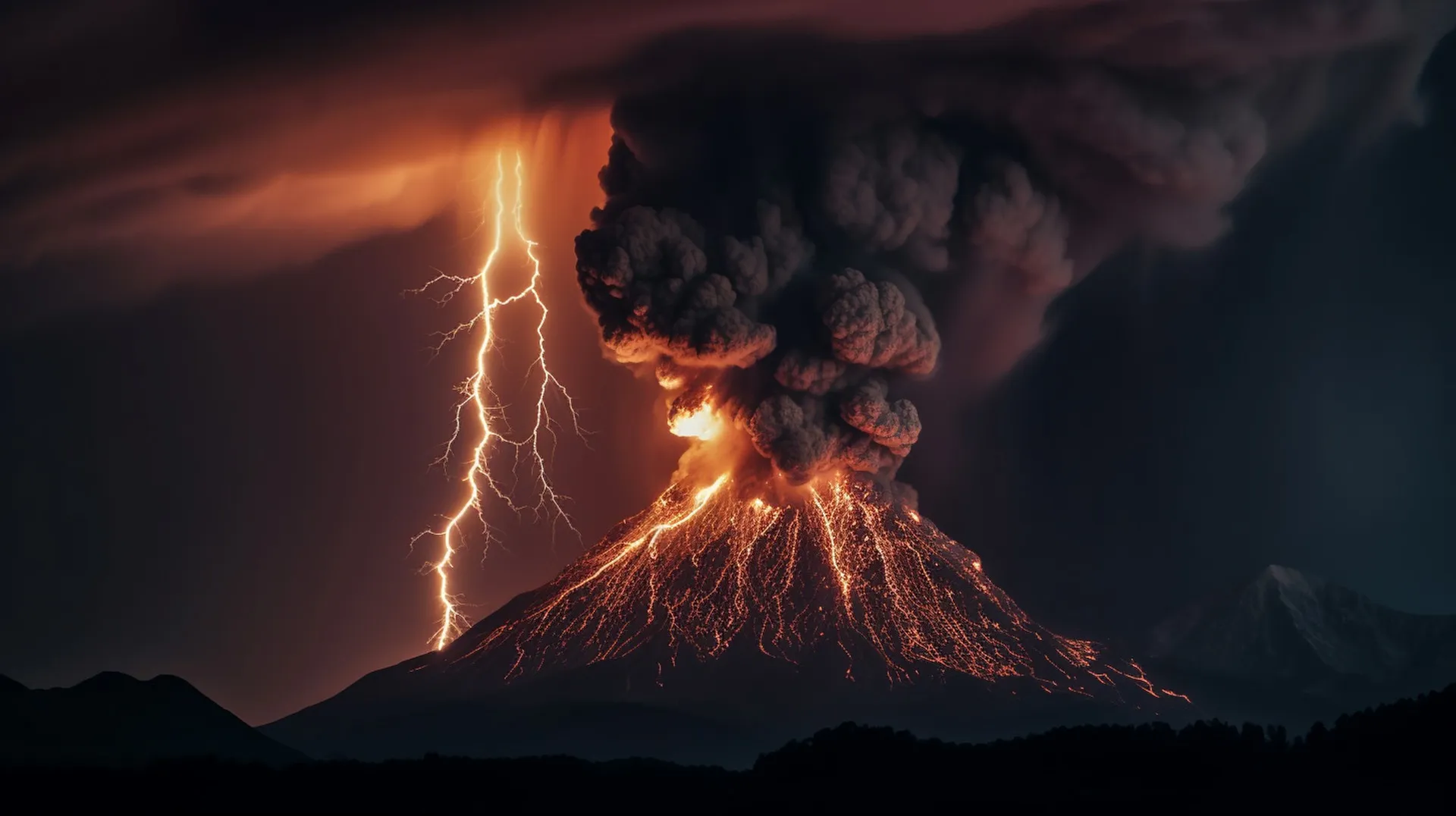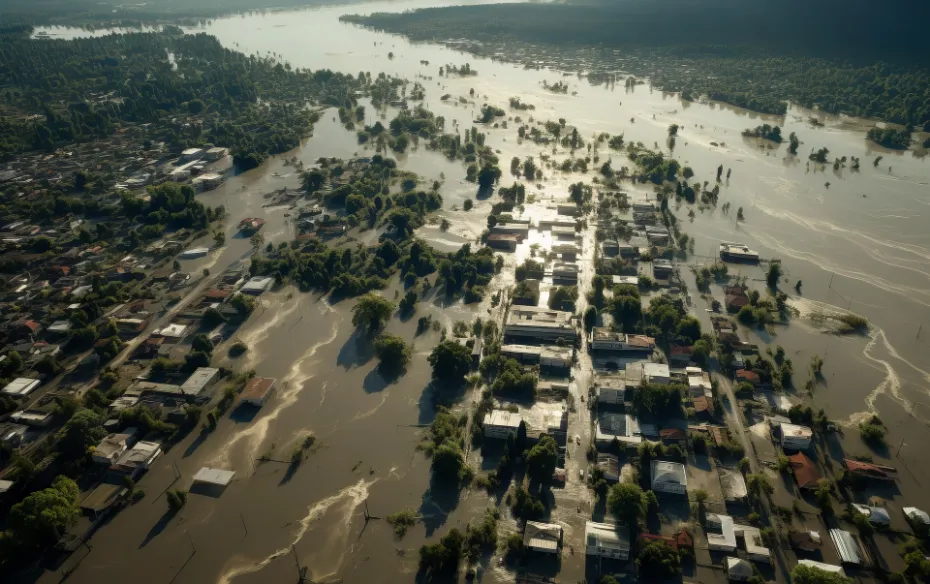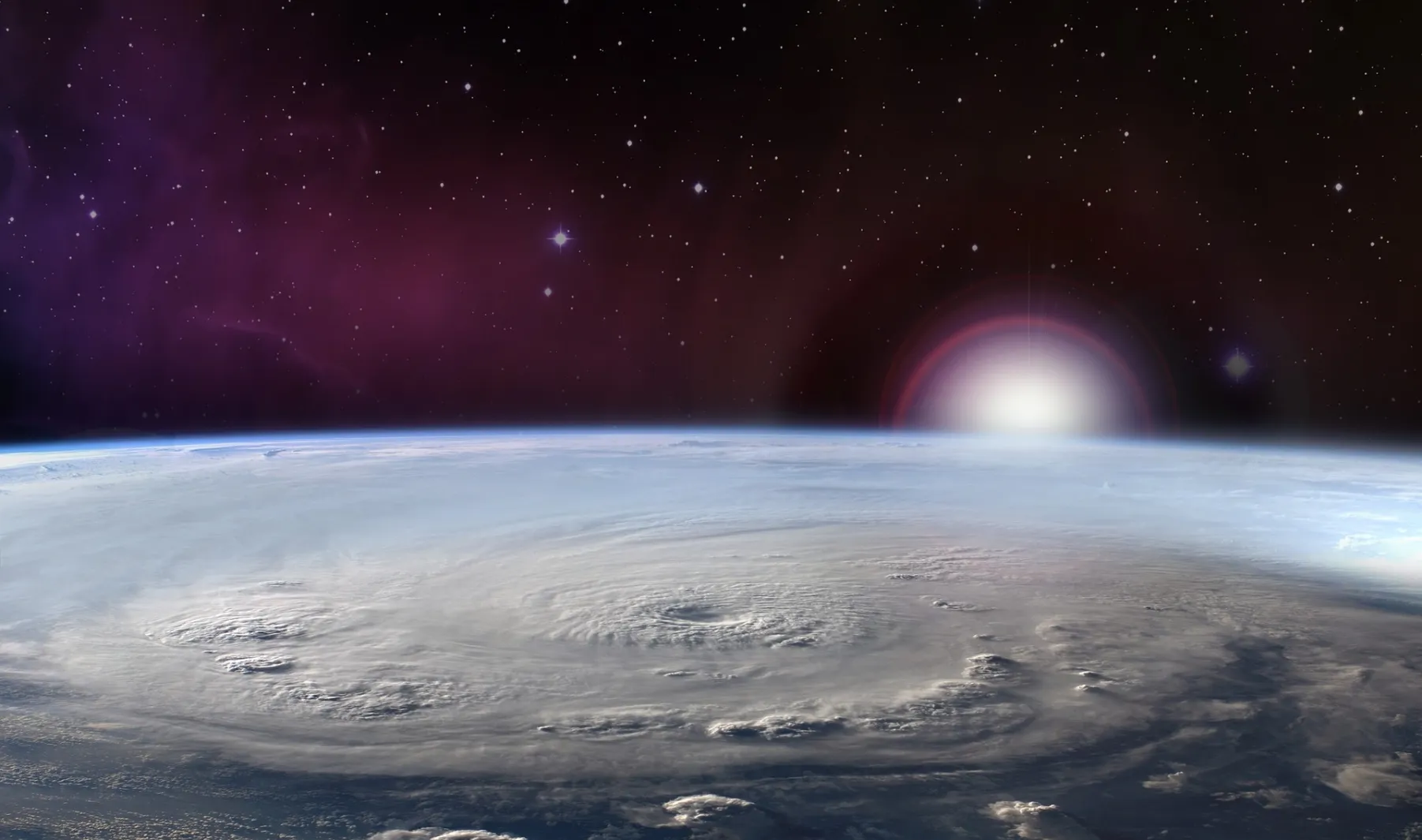
Natural disasters are formidable forces that can strike with little warning. But, more often than not, nature provides subtle hints that something significant is about to happen. In this blog, we explore the warning signs of various natural disasters, from earthquakes and volcanic eruptions to hurricanes and landslides. Understanding these signs, coupled with the scientific explanations behind them, is crucial for early preparation and evacuation.
Table of Contents
Earthquakes
When the Earth’s crust undergoes intense stress and pressure, it can unleash catastrophic energy in the form of earthquakes. These powerful geological events can strike with little warning, but there are often subtle signs that nature provides to alert us to their impending occurrence.
Foreshocks
Before a major earthquake, nature occasionally issues a series of smaller tremors known as foreshocks. These preliminary quakes serve as nature’s cautionary tales, offering a critical indication that a more substantial seismic event may be imminent. In some instances, foreshocks possess enough power to cause significant damage independently.
San Francisco earthquake’s foreshock 1906
A noteworthy example is the 1906 San Francisco earthquake’s foreshock, with a magnitude of 5.7, causing considerable destruction.
Scientific Explanation: The scientific explanation behind foreshocks lies in the accumulation of stress within the Earth’s crust. As tectonic plates slowly shift and grind against one another, stress builds up in these geological fault zones. When this stress reaches a critical point, it’s released in the form of seismic energy, causing an earthquake. Foreshocks are early indications of this energy release, signaling that the Earth’s crust is on the verge of a more substantial rupture.
Changes in Animal Behavior
Animals often possess a keen sensitivity to their surroundings, which can extend to detecting impending earthquakes. There are numerous accounts of animals displaying unusual behavior shortly before an earthquake.
In the Chinese city of Haicheng in 1975, residents reported a significant uptick in snake activity before a devastating quake. Most of the city was evacuated except a few people died of building collapse, fire, and hypothermia.
Scientific Explanation: The scientific explanation for changes in animal behavior as a precursor to earthquakes is still a subject of ongoing research. Some theories suggest that animals can detect changes in the Earth’s magnetic field or seismic activity, which may precede the shaking of an earthquake. Their heightened senses or intuitive reactions could serve as an early warning system, potentially saving lives.
Physical Changes in the Environment
Before a major earthquake, nature sometimes provides more visible signs, like cracks in the ground or changes in the water level of rivers. These alterations in the environment can be early indicators of impending seismic activity.
The Great Alaska Earthquake 1964
The 1964 Great Alaska Earthquake serves as an example of the physical changes observed before a significant seismic event. In this case, residents of the coastal town of Valdez noticed a drastic drop in the water level of the harbor. Later, the main earthquake, with a magnitude of 9.2, struck, triggering tsunamis that had the potential to flood the harbor. Thanks to the observed drop in water level, people had time to evacuate, potentially saving lives.
Scientific Explanation: Physical changes in the environment before an earthquake are often associated with the shift and movement of the Earth’s crust. These may manifest as fissures or cracks on the ground’s surface or as variations in water levels due to ground movement. Such alterations serve as tangible evidence of the geological forces at play beneath the Earth’s surface, warning us of the impending seismic activity.
Volcanic Eruptions
Volcanic eruptions, some of the most awe-inspiring natural phenomena on Earth, are fueled by the incredible forces beneath our planet’s surface. While they can be incredibly destructive, there are often observable signs that hint at an impending eruption.

Ash and Gas Emissions
One unmistakable sign of an impending volcanic eruption is the dramatic release of ash and gas from the volcano. These emissions can vary from subtle wisps of smoke to towering columns of ash and gas reaching the stratosphere. The volcanic plume visually represents the intense geological activity occurring beneath the Earth’s surface.
Eruption of Mount St. Helens 1980
The eruption of Mount St. Helens in 1980 in Washington State, USA, vividly demonstrates ash and gas emissions as a warning sign. In the weeks leading up to the catastrophic eruption, the volcano spewed significant ash and gas. This intensified emission served as a clear indication of the impending disaster. The subsequent eruption unleashed a devastating lateral blast, claiming lives and causing extensive destruction.
Scientific Explanation: The explanation for ash and gas emissions before a volcanic eruption is grounded in the dynamics of magma beneath the Earth’s surface. As molten rock, or magma, moves and accumulates beneath a volcano, it generates pressure. The release of ash and gas results from this pressure buildup and the subsequent rupture of the Earth’s crust, allowing these materials to escape.
Changes in Seismic Activity
The Earth is rarely still beneath a volcano. Changes in seismic activity, such as increased earthquakes, serve as indicators that the geological conditions within the volcano are shifting. These seismic events can be felt as tremors and are usually a prelude to an eruption.
Scientific Explanation: Changes in seismic activity can be traced to the dynamic interactions of tectonic plates and the movement of magma within the volcano. As magma ascends, it can induce pressure changes and fractures in the surrounding rock, leading to increased earthquake activity. These tremors are a manifestation of the restless forces within the Earth’s crust that precede a volcanic eruption.
Floods
Floods, among the most widespread and devastating natural disasters, often provide discernible warning signs before they occur. Understanding these signs can be crucial for early preparation and evacuation.

Heavy Rainfall or Snowmelt
One of the most direct precursors to flooding is heavy rainfall or snowmelt. Excessive rain or melting snow can lead to water overflow into rivers and streams, ultimately causing flooding.
The Great Flood 1993
The Great Flood of 1993 in the central United States exemplifies the link between heavy rainfall and flooding. Months of persistent and intense rainfall saturated the soil, causing rivers like the Mississippi and Missouri to swell beyond their banks, leading to one of the most devastating floods in U.S. history.
Scientific Explanation: The scientific explanation is straightforward. Excessive rainfall or rapid snowmelt saturates the ground, overwhelming rivers and streams with more water than they can handle. This surge in water volume spills over riverbanks, inundating low-lying areas and causing floods.
Rising River Levels
Monitoring river levels is a fundamental part of flood prediction and warning systems. As water accumulates from heavy rainfall or snowmelt, river levels begin to rise. This rise serves as a crucial warning sign that a flood may be imminent.
Scientific Explanation: The scientific basis is rooted in hydrology. Precipitation flows into rivers and streams, causing water levels to rise. When these levels exceed the river’s capacity, it results in flooding in surrounding areas.
Changes in Vegetation
Another subtle yet important warning sign of an impending flood is visible in the changes in vegetation. When trees or plants exhibit alterations such as dying or withering, it can be an indication that flooding is on the horizon.
Scientific Explanation: The scientific rationale lies in the physical effects of flooding on plant life. Floodwaters saturate the soil, depriving plant roots of oxygen, leading to root weakening and death. Observing these changes in vegetation provides valuable early indicators of potential flooding.
Hurricanes
Hurricanes, some of the most potent natural disasters on our planet, can cause widespread devastation. Recognizing and understanding their distinct warning signs are crucial for preparation and evacuation.

Changes in Wind Direction
One of the most prominent signs of an approaching hurricane is a shift in wind direction. As the hurricane nears, wind patterns change, signaling its imminent arrival.
Hurricane Katrina 2005
In August 2005, the United States Gulf Coast witnessed a catastrophic example of this phenomenon when Hurricane Katrina struck. As the hurricane approached, wind direction changed, and the winds intensified. The change in wind patterns was a clear indicator of the impending disaster.
Scientific Explanation: The scientific explanation for changes in wind direction as a hurricane approaches is rooted in the rotation of the hurricane itself. Hurricanes have a distinctive circular wind pattern with a calm center known as the “eye” and increasingly powerful winds moving in a circular motion around it. As a hurricane approaches an area, the wind direction shifts due to the rotation of the storm.
Changes in Atmospheric Pressure
Hurricanes are often accompanied by a significant drop in atmospheric pressure. This change can be measured and serves as a critical warning sign, indicating the presence and proximity of a hurricane.
Scientific Explanation: The scientific explanation for changes in atmospheric pressure is closely tied to the structure and dynamics of hurricanes. As hurricanes develop, they create a low-pressure system at their center. This low-pressure area is responsible for the drop in atmospheric pressure that can be detected in regions where the hurricane’s influence is felt.
Storm Surges
Storm surges are one of the most dangerous and destructive aspects of hurricanes. These walls of water are pushed inland by the sheer force of the hurricane, causing coastal flooding and significant damage.
Hurricane Sandy 2012
Hurricane Sandy, which struck the northeastern United States in 2012, generated a massive storm surge that inundated coastal areas. The surge’s impact was particularly devastating in the New York City area, causing widespread flooding.
Scientific Explanation: The scientific explanation for storm surges is related to the powerful winds of a hurricane. As a hurricane approaches a coastline, it forces a tremendous volume of water toward the shore. The combination of the low-pressure system within the hurricane and the strong winds creates a surge effect, resulting in coastal flooding. Understanding the potential for storm surges is a crucial aspect of hurricane preparedness and evacuation.
Tornadoes
Tornadoes, with their swift formation and destructive potential, are among the most formidable natural disasters. Yet, nature does provide cues to help us brace for their impact, especially in tornado-prone regions.

Funnel Clouds
One of the most unmistakable signs of an impending tornado is the sight of a funnel cloud. These twisting columns of air extend from the base of a thunderstorm down to the ground, creating the iconic image of a tornado.
Tri-State Tornado 1925
The infamous “Tri-State Tornado” of 1925, which swept through Missouri, Illinois, and Indiana, was marked by the ominous appearance of a funnel cloud. Eyewitnesses saw it as the tornado neared, offering them a visual warning of the impending disaster.
Scientific Explanation: Funnel clouds are essentially the early stage of tornado formation. They occur when strong upward winds in a thunderstorm create a rotating, funnel-shaped cloud extending from the storm’s base. As this rotation intensifies and approaches the ground, it can evolve into a full-fledged tornado.
Loud Roaring Sound
In many cases, tornadoes produce a distinctive and unnerving roaring sound. This noise often likened to a passing freight train, is a clear audible indicator of a tornado’s presence.
Scientific Explanation: The roaring sound associated with tornadoes is generated by the powerful winds within the tornado. The intense wind circulation can produce a low-frequency rumble that becomes increasingly pronounced as the tornado approaches. The sound is due to the swirling motion of the winds and the pressure changes in the tornado’s core.
Changes in Wind Direction
Another significant warning sign of an approaching tornado is the sudden and erratic shifts in wind direction. As a tornado develops, it can create rapid changes in wind patterns, often noticeable before the tornado is visible.
Scientific Explanation: The scientific explanation for these wind shifts is tied to the tornado’s formation. As the tornado descends, it generates a strong and turbulent updraft. This updraft can cause wind patterns at the surface to shift suddenly and chaotically, a phenomenon that experienced storm chasers and meteorologists use to identify potential tornado activity. Understanding these shifts can be a life-saving skill for those living in tornado-prone regions.
Landslides
Landslides are geological events that can cause significant destruction, and understanding their warning signs is crucial for residents in hilly or mountainous regions.
Heavy Rainfall
One of the most common triggers for landslides is heavy rainfall. Prolonged or intense rain can saturate the ground, making it heavy and unstable. This extra weight on slopes can lead to landslides.
The Oso Landslide 2014
Let’s journey back to 2014 in Washington state, USA, where the Oso landslide left a lasting mark. This catastrophic event was heavily influenced by the relentless downpour that preceded it. The soil in the area became waterlogged, a condition that significantly contributed to the landslide’s occurrence. It stands as a poignant reminder of how rainfall can act as a tipping point.
Scientific Explanation: The science behind this phenomenon is as uncomplicated as it is insightful. The surplus water from heavy rainfall infiltrates the soil, permeating the spaces between soil particles. The accumulation of this water increases the soil’s weight, diminishing the friction between it and the underlying rock or sediment. It’s a classic case of ‘the last straw that breaks the camel’s back.’ When friction can no longer retain the soil in place, a landslide is set into motion.
We Have Learned

By paying heed to the telltale signs that nature offers, we can better equip ourselves to face the unpredictable forces of natural disasters. From the unmistakable rumble of a tornado to the release of ash and gas preceding a volcanic eruption, these warnings are the Earth’s way of alerting us. Preparedness, driven by scientific understanding, can save lives and mitigate the impact of these awe-inspiring but destructive events.








